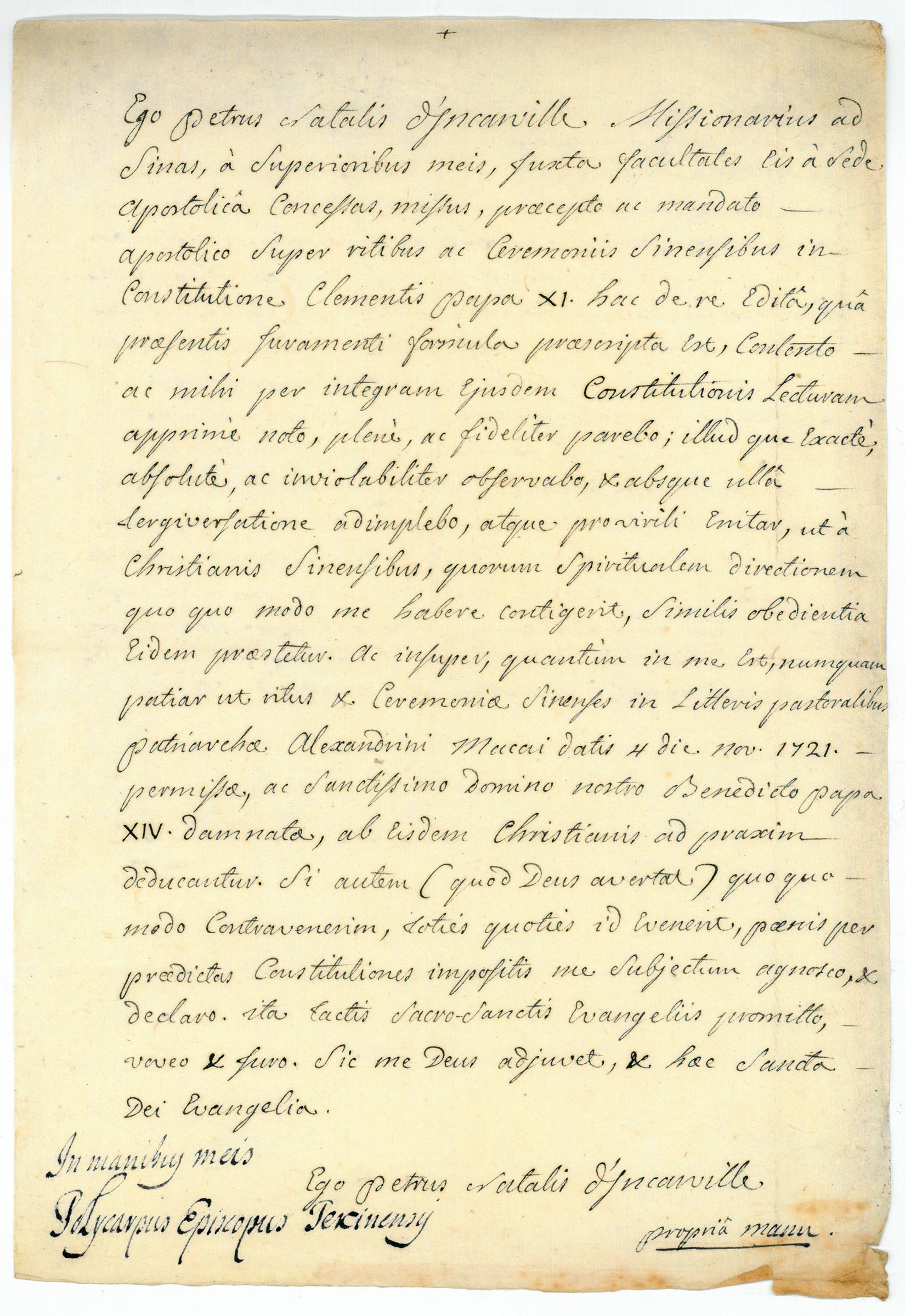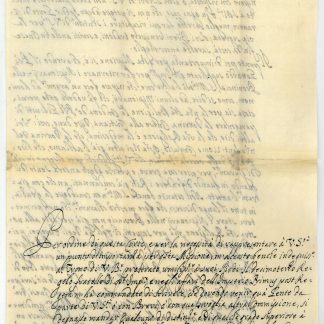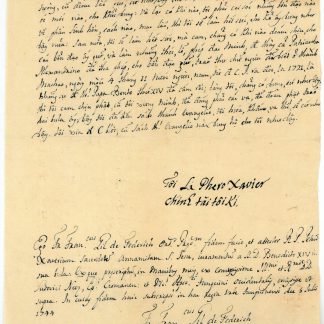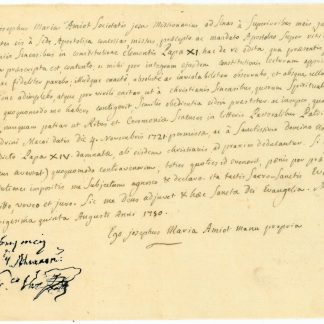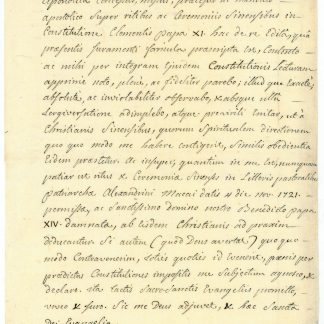The Jesuit botanist tasked with converting the Qianlong Emperor
Autograph document signed. Co-signed by the bishop of Beijing, Polycarpo da Souza.
8vo. 1 p. in Latin.
€ 3,500.00
An oath renouncing the practice of the Chinese rites, taken by the prominent Jesuit as required by the Papal Bull "Ex Quo Singulari" (1742). The oath was sworn on the Bible, and a form signed in one's own hand ("manu propria") had to be produced as evidence. Most of these documents are co-signed by church officials or senior friars as witnesses to an oath sworn in their presence ("in manibus meis"), in this case the Bishop of Beijing, Polycarpo da Souza (1743-57).
If Pierre Nicolas le Chéron d'Incarville is among the less well-known representatives of the small but important 18th century French Jesuit mission to the Imperial Court in Beijing, this is certainly due to his premature death, following an illness in 1757. His work as a botanist and correspondent of the Jardin des Plantes in Paris, which introduced many Chinese plants to Europe and vice versa, and his writings on Chinese arts, crafts, and technology were highly influential at the time. Born at Louviers, Normandy, D'Incarville entered the Jesuit order in 1727 and was initially sent to teach at the college in Quebec. In 1739 he briefly returned to France and spent several months training with imporant botanists and chemists such as Bernard de Jussieu and Guillaume-François Rouelle. At his arrival in Beijing in 1740, D'Incarville was initially tasked with converting the Qianlong Emperor, a hopeless endeavour which he could not even begin, as he was denied access to the palace for several years. Only in 1753, when the Emperor was shown some of the non-native plants that D'Incarville had successfully grown, especially the curious Mimosa pudica, he was granted access to the Imperial Gardens and the palace. D'Incarville formed an excellent relationship with the Emperor and the directors of the gardens and worked relentlessly as a botanist for the final years of his life. Among the plants that he introduced to the West are the tree of heaven (Ailanthus altissima), the pagoda tree (Styphnolobium japonicum), and the goldenrain tree (Koelreuteria paniculata). He was also the first European to mention and describe the kiwifruit under its old Chinese name yang tao. His published writings include texts on Chinese lacquerwork, silk farming, the production of saltpetre, and Chinese fireworks.
During the early years of their mission to East Asia, the Jesuits led by Matteo Ricci accommodated Catholicism to Chinese customs and Confucian practice in important ways, both for political reasons and in the hope of attracting more converts. Criticism of this syncretism is as old as the Chinese rites themselves, and Ricci's immediate successor Niccolò Longobardo attempted to change course, which led to his replacement as provincial. When Dominican and Franciscan missionaries entered China, they reported to Rome critically on the Jesuit practices. A first condemnation was decreed by Pope Clement XI in 1704 and confirmed in the 1715 Bull "Ex Illa Die". In reaction to the condemnation, the Kiangxi Emperor, who initially tolerated the Christian missionaries and had especially good relations with the Jesuits, officially forbade Christian missions in China. In 1721, Carlo Ambrosio Mezzabarba, the Latin Patriarch of Alexandria, was sent to Macau and Beijing as a Papal legate. Despite the concession of "eight permissions" regarding the practice of the Chinese rites, officiated in a pastoral letter to the missionaries from 4 November 1721, the Emperor did not revoke the ban. Finally, in "Ex Quo Singulari", Pope Benedict XIV re-affirmed the 1715 Bull and required all missionaries in the region to take the oath renouncing the practice of Chinese rites.
A transcription and translation of the document is available on request.
Slightly soiled. With a minor tear to the lower right corner.

